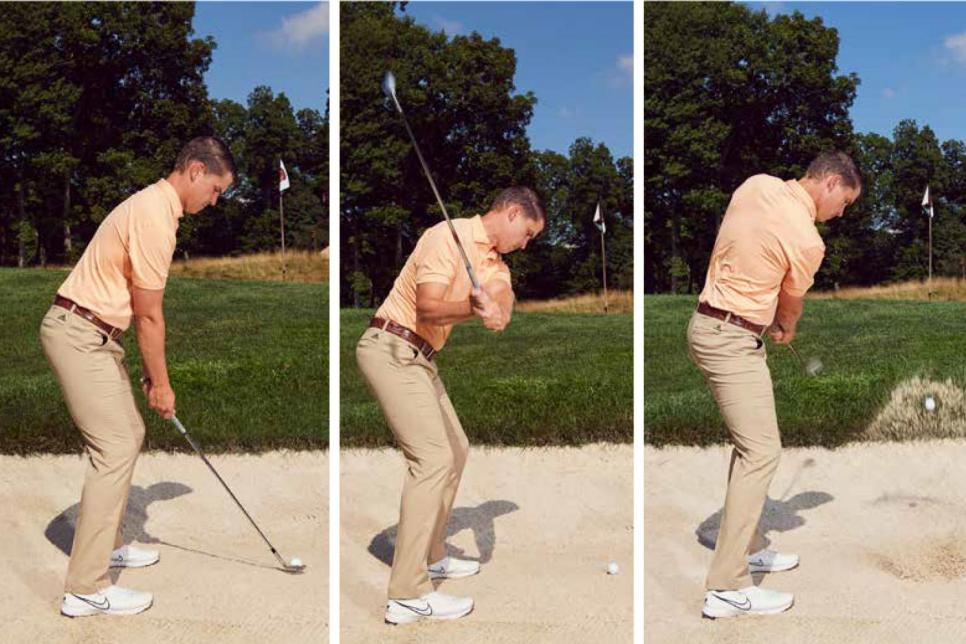BEST YOUNG TEACHERS
Learn how to put the brakes on razor-thin bunker shots

Photographs by James Farrell
Outside of a shank, there might be no more feared shot in the short game than a skulled bunker shot. Catch one extra thin from the greenside sand, and you risk bringing double bogey or worse into play.
The trouble with the skull is that in trying to avoid it, most amateurs are doomed to repeat it.
They aim at a spot even farther behind the ball with the intention of driving the clubhead into the sand, and in doing so, make it increasingly more likely that they’ll catch the ball first. Fortunately, with a few simple setup and swing adjustments, you can conquer your fear of the skull and learn to hit high, spinny bunker shots that land softly and safely on the green. Here’s how.

The first mistake amateurs make is that they set up too open—aimed left of their target (for righties)—at address. This encourages a steep, out-to-in downswing path and too sharp an entry into the sand, which causes the club to dig, not skim. Instead, set up with your shoulders square or slightly closed to the target—pointing right (above, left)—which will promote a shallow, in-to-out path and not as deep a divot. Position the ball directly opposite the logo on the left side of your chest and distribute your weight evenly on both feet. Next, dial the clubface open several degrees, then take your grip and lower the shaft and handle until the clubhead is level to the ground. This ensures the loft stays pointed at the target even when the face is open. All of these adjustments should put you in a better position to swing your arms more naturally and hit the spot you’re looking at, about an inch or two behind the ball. If the clubhead enters the sand too far back—a common mistake with an overly steep swing—it’s liable to be traveling upward when it finally reaches the ball, exposing the leading edge to the top half of the ball.
As for the swing, feel like you’re lifting the club from underneath the grip and allow your trail arm to fold quicker on the backswing (above, center), which sets the club on the proper path. As the club enters the sand, imagine it’s coming in on the same smooth landing angle as an airplane, cutting a shallow swath through the sand (above, right). Continue to swing and rehinge your arms after impact so that your follow-through matches the length of your backswing.

Drill: Refine your entry point
The following drill helps promote a more consistent entry point in the sand and stops you from bottoming the club out too soon. Place a towel down approximately two clubhead lengths behind a ball and hit some shots, missing the towel on the backswing and downswing. After a dozen balls, you should have a greater awareness of where the clubhead touches down, about one to two inches behind the ball. The better you get at it, the closer you can move the ball to the towel.
CJ NAFUS, one of Golf Digest’s Best Young Teachers in America, is director of instruction at Roxiticus Golf Club in Mendham, N.J.
—with Dave Allen